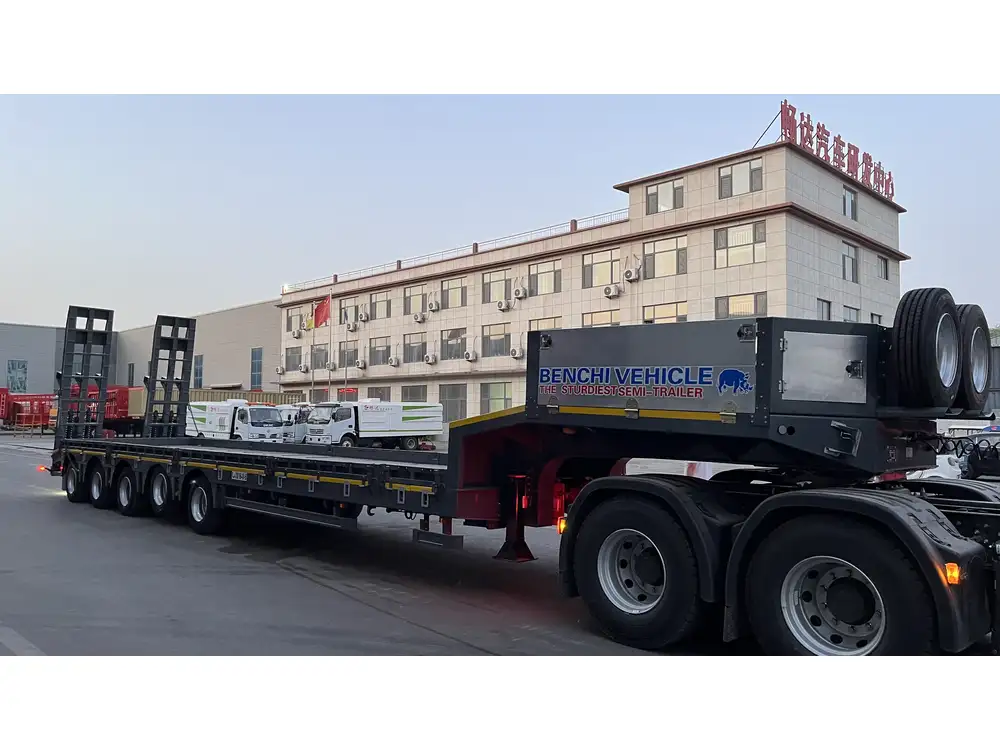When it comes to transporting horses, one of the critical considerations for horse owners, trainers, and transportation companies alike is understanding the capacity and specifications of semi-trailers specifically designed for this purpose. The question of how many horses fit in a semi-trailer is multifaceted and depends on several factors including the size and dimensions of the trailer, the sizes of the horses being transported, and relevant safety considerations. This article will provide an in-depth analysis of these elements, helping you make informed decisions when transporting your equine companions.
Understanding Semi-Trailer Specifications
Types of Semi-Trailers for Horses
There are several types of semi-trailers specifically designed for transporting horses:
- Straight Load Trailers: These are among the most common types. Horses face either forward or backward, depending on the design.
- Slant Load Trailers: In these trailers, horses are loaded at an angle. This design allows for more efficient space use and easier loading/unloading.
- Warmblood Trailers: These are designed to accommodate larger breeds of horses like Warmbloods, providing additional height and width.

Dimensions and Capacities
The size of a semi-trailer will vary, but most horse trailers typically range from 6.5 to 8 feet wide. The general interior space dimensions frequently dictate how many horses can comfortably fit.
| Type of Trailer | Average Length | Average Width | Average Height |
|---|---|---|---|
| Straight Load | 20-30 feet | 6-8 feet | 7-8 feet |
| Slant Load | 20-30 feet | 6-8 feet | 7-8 feet |
| Warmblood | 30-36 feet | 8-9 feet | 8-9 feet |
Weight Capacity Considerations
The weight of a standard horse is approximately 1,000 to 1,200 pounds. Therefore, a semi-trailer’s load capacity also influences how many horses can safely travel in it. The average weight of a horse trailer loaded with two horses should ideally not exceed 30% of the towing vehicle’s gross combined weight rating (GCWR).
Determining Horse Capacity

Factors Impacting Horse Capacity
Horse Size: The average horse stands between 14.2 and 17 hands, but larger horses, like draft breeds, will take more space. An additional consideration is their weight.
Travel Safety: It’s crucial that horses have enough room to stand comfortably and not feel stressed during transport.
Estimating Horse Capacity
Generally, a standard 7-ft wide trailer can fit:
- 2 Horses: In a straight load, horses can stand side by side.
- 3 Horses: In a slant-load configuration, you may fit three smaller horses comfortably.
- 4 Horses: Larger trailers designed specifically for multiple horses may accommodate four smaller to average-sized horses.
Here’s a simplified breakdown based on trailer configurations:
| Type of Trailer | Horses Fitting | Size Consideration | Recommended Weight per Horse |
|---|---|---|---|
| Straight Load | 2-3 | Standard size (1000-1200 lbs) | Up to 1200 lbs |
| Slant Load | 3-4 | Average horses (800-1000 lbs) | Up to 1100 lbs |
| Warmblood Trailer | 4 | Larger breeds (1200-1400 lbs) | Up to 1400 lbs |
Example Scenarios
- For a straight load trailer with a width of 7 feet:
- Two Average Horses (1,000 lbs each): Would fit comfortably with enough space to shift positions if needed.
- For a slant load trailer designed to fit three horses:
- Three smaller horses (800-900 lbs each): Perfect for maintaining comfort during transport, ensuring the weight does not exceed the trailer’s limit.

Safety Guidelines for Horse Transport
Transporting horses entails more than just fitting them into a trailer; safety is paramount. Consider implementing the following guidelines:
Pre-Loading Checklist
- Trailer Inspection: Ensure the integrity of the trailer, including floor, walls, and doors.
- Secure Ties: Ensure all tie rings are functional, and consider cross-tying for added security.
Loading Procedures
- Calm Environment: Minimize distractions and ensure a soothing loading environment.
- Use Non-slip Surfaces: Ensure that the interior of the trailer has mats that prevent slipping.

During Transportation
- Regular Breaks: Schedule stops to avoid extended periods of standing.
- Monitor Temperature: Ensure proper ventilation inside the trailer to prevent overheating.
Legal Considerations
Compliance with Transportation Laws
When transporting horses, it’s essential to be aware of regional laws and regulations:
- Health Certificates: Ensure horses have up-to-date health papers, especially for interstate travel.
- Transport Permits: Depending on local regulations, you may need permits to transport livestock.

Conclusion: Making the Right Decision
Understanding how many horses fit in a semi-trailer extends beyond simply counting heads. It necessitates a thorough evaluation of the trailer dimensions, horse sizes, and critical safety measures to ensure a successful and smooth transport experience.
In summary, by factoring in these various dimensions, configurations, and safety protocols, you’ll be equipped to make informed, safe, and effective transportation choices for your horses. Whether you are a trainer, owner, or a transportation professional, utilizing this comprehensive guide can be pivotal in optimizing transport operations, ensuring the comfort of equines, and adhering to safety and legal standards.
Your horsemanship practices and transportation responsibility should reflect the same standard of care intended for the animals you love. Happy trails!



